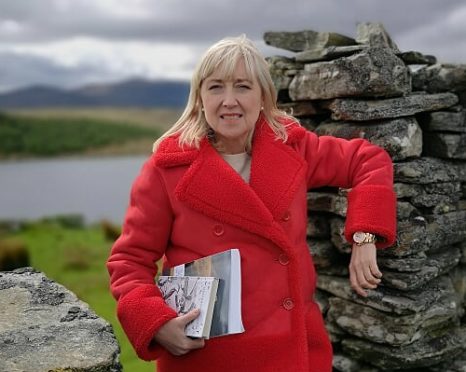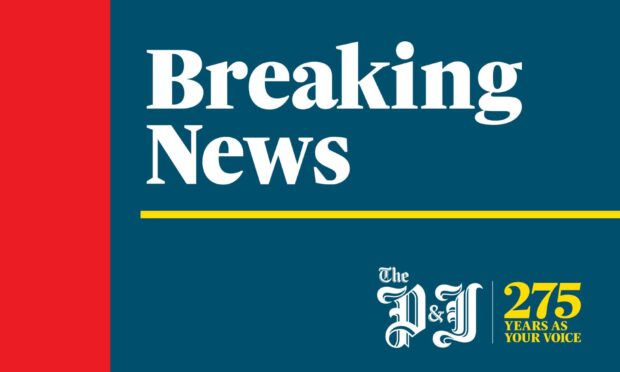It was one of the most brutal acts in the history of Scotland; the depopulation of vast swathes of the Highlands.
Even now, 200 years later, the clearances evoke strong emotions, while once-thriving communities fester as ruins in a barren landscape.
Renowned Scottish author, Iain Crichton Smith, who lived on Lewis and was educated at Aberdeen University, captured the culture clash between Highlanders and Lowlanders in his acclaimed 1968 novel ‘Consider the Lilies’.
It tells the story of Mrs Scott, an elderly and devout woman who lived through the infamous Sutherland Clearances of the 19th century.
The poignant work has now become the subject of a BBC Alba documentary, which will be screened tomorrow night.
In it, presenter Cathy Macdonald explores the fact behind the fiction when she visits Strathnaver in the north of Scotland – the Sutherland glen from which some 2,000 people were forcibly removed by the notorious factor, Patrick Sellar, one of several real-life figures whose presence looms large.
The programme includes contributions from Jim Hunter, emeritus professor of history at UHI, who has just published a new book about Scotland’s Famine Winter in 1846-47.
And, when Mr Hunter spoke to the Press and Journal, he revealed that Mr Crichton Smith had been one of his teachers when he was a student at Oban High School.
He said: “Iain Crichton Smith was a fine man [he died in 1998] and his work captures extraordinarily effectively the clash of cultures that produced the entire clearance episode, in which you had a traditional, Gaelic-speaking society on one side, and a triumphantly expansionist capitalism on the other.
“The Sutherland clearances were exceptionally far-reaching and often brutal.
“Between 1813 and 1821, some 150 and 200 settlements were emptied completely in the three eastern Sutherland straths – Strathbrora, the Strath of Kildonan and Strathnaver.
“Sellar was to the fore of all of this. First as a Sutherland Estate factor, then as one of the estate’s tenant farmers – ending up in control of virtually all of Strathnaver.
“His own conduct during these operations – which involved burning hundreds of emptied homes – came in for a great deal of criticism at the time and culminated in him being tried for culpable homicide in the High Court in Inverness.
“The charges arose from a particular eviction at a place called Badinloskin between Strathnaver and the Strath of Kildonan.
“Sellar was alleged to have set fire to a house containing a very old woman before that woman could be moved out of it – and she died shortly afterwards.
“He was acquitted – but the very fact that a man of his status was brought to trial at all is in many ways remarkable.”
As the documentary makes clear, parts of the Highlands have never recovered from what happened during the clearances.
The homes where so many dwelt are now crumbling to dust while the names of their inhabitants have faded into the ether.
Mr Hunter said: “What happened to Sutherland people was by not dissimilar to what was being done at the same time to Australian Aborigines, Native Americans and many others.
“Sellar’s self-image was of a man who was bringing civilisation, commerce and progress to what he saw as a benighted and backward part of Scotland.”
Others viewed his actions as the catalyst for a wasteland in the far north.
‘A deeply moving experience’
For presenter Cathy Macdonald, being involved in ‘Consider the Lilies’ was a poignant journey into the past.
“I knew this classic novel of the clearances really well, but it was vividly brought to life by exploring the landscape of Sutherland where the tragic events originally took place,” she said.
“Visiting Strathnaver some 200 years later, was a deeply moving experience, and Iain Crichton Smith captured the pathos and brutality of that chapter in our Highland history, through the eyes of a complex fictional character.
“On a beautiful, crisp day we stood among the ruins of Grumbeg overlooking Loch Naver and Ben Klibreck.
“The silence was a poignant reminder of how powerless the people were, against the authorities that banished them from their homeland.
“It’s little wonder [lead character] Mrs Scott was in such turmoil when threatened with eviction from her home. ”
The documentary’s producer, Faye MacLean, said: “We try to select novels that have been greatly influenced by a time and a place and that was certainly the case for ‘Consider the Lilies’.
“We spent a week in May filming in the Sutherland. All of us involved in the production felt that we had a greater connection to, and understanding of, the novel after visiting Strathnaver where Iain Crichton Smith’s story was set.
“It is an incredibly beautiful area that would at one time have been home to some 2,000 people, but today is virtually empty and silent.
“Reading extracts from the book while standing among the ruined homes of the people who were cleared was a really poignant experience.”
‘Sar Sgeoil: Consider the Lilies will be shown tomorrow on BBC Alba from 9-10pm.










